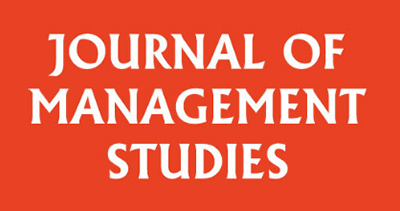
Research has shown that work groups with a demographically diverse membership (e.g., a mixture of races and genders) are able to translate the variety of perspectives into heightened effectiveness, increased creativity, and better overall performance. Why, then, do groups that have a little diversity not get more diverse over time? It would seem logical for groups that experience some of these benefits to then strive for further diversity in hopes of even greater outcomes.
However, groups with token levels of diversity have been observed to perpetuate this demographic imbalance over time, essentially reproducing themselves in their own image, despite a heightened societal focus on diversity and an increasingly heterogenous workplace. In our paper, recently published in the Journal of Management Studies, we sought to explain this tendency of work groups to add new members that match the group’s demographic majority.
Token Levels of Diversity Contribute to Moral Licensing
We based our arguments on the concept of moral licensing, which suggests that people allow themselves to deviate from moral norms when they have previously engaged in moral acts. We suggest that groups with a little diversity are likely to have developed a collective moral credential, which we defined as “a group’s shared perception of its positive moral standing.” More specifically, we argue that the presence of some diversity leads groups to believe they have established themselves as non-discriminatory.
Because a moral credential acts as a lens through which subsequent behavior is viewed more favorably, this enables groups to overlook things that might otherwise be considered morally questionable. In the context of group decisions for adding new members, this could manifest as a failure to challenge potentially biased or prejudicial comments during discussions of minority candidates. Ultimately, this is likely to result in group decisions to add new members that match the demographic make-up of the majority.
Context Matters
Because the context within which groups operate can affect group behavior, we also considered factors that might accentuate and/or mitigate the process we outlined above, including the diversity climate of the organization, the prevailing social norms regarding diversity, and the decision rules the group employs to select new members.
Diversity Climate
An organization’s diversity climate captures its approach to diversity, whether emphasizing fairness or fostering synergy, and shapes how groups experience and respond to diversity. A fairness-centered climate prioritizes equality and the prevention of discrimination through justice-oriented workplace practices. In contrast, a synergy-driven diversity climate encourages the active inclusion of diverse perspectives to enhance teamwork and innovation. This approach goes beyond surface-level representation, urging employees to see diversity as a resource for growth and collaboration rather than a checkbox for compliance.
Because a fairness-focused diversity climate emphasizes adherence to organizational policies, this approach can lead groups to view even minimal levels of diversity as aligning with organizational standards, reinforcing a sense of shared morality, and ultimately increasing the likelihood that a group with token levels of diversity remains demographically skewed over time. However, by fostering a deeper appreciation of diverse contributions, a synergy-focused diversity climate discourages the belief that token levels of diversity are sufficient, instead promoting a desire to increase the number of differing perspectives within the group.
Prevailing Social Norms
Group behaviors are shaped not only by organizational climate but also by broader contextual signals, such as prevailing social norms. These norms reflect the typical behaviors within a population and act as benchmarks for what is considered acceptable. In the context of diversity, these norms can influence groups by setting expectations about appropriate levels of representation.
Prevailing social norms can define what is viewed as an acceptable degree of diversity within workgroups. As a result, when groups view themselves as meeting or exceeding the prevailing norms for diversity, they are more likely to develop a collective moral credential and subsequently add new members that match the group majority. Conversely, when groups perceive themselves as falling short of these norms (i.e., having less diversity than other groups), they may not view token levels of diversity as acceptable, are less likely to develop a collective moral credential, and might feel compelled to increase minority representation.
Decision Rules
Finally, the way groups make decisions has a significant impact on their outcomes. These decision-making rules, such as majority or unanimity, shape group interactions and often dictate the depth of discussions. The majority rule requires only a simple majority to reach a decision, which may limit the depth of deliberation. In contrast, the unanimity rule, which requires full agreement among members, tends to prompt more extensive dialogue and encourages everyone to share their perspectives. This approach not only fosters greater understanding but also provides a platform for minority viewpoints to be heard and considered.
Groups that use majority rule for decision-making are more likely to see a collective moral credential result in the addition of a new member that matches the demographic majority because they are less likely to have robust discussions that uncover minority viewpoints and challenge potential implicit biases – automatic judgments influenced by stereotypes that individuals may not even realize they hold. However, groups that use the unanimity rule are less likely to have a collective moral credential result in a homogenous hire because the more thorough discussions create opportunities to uncover and challenge potential biases that might prevent groups from selecting a more diverse candidate.
Implications for Organizations
Our work explains why groups with a little diversity often fail to get more diverse over time by highlighting how the presence of a token minority member “credentials” the group as non-discriminatory, leading it to fail to challenge potential biases that result in the selection of new members that match the group majority. However, it also explains how organizations can mitigate this process – by fostering a synergy-focused diversity climate and encouraging groups to strive for unanimity in their decision-making processes.

0 Comments